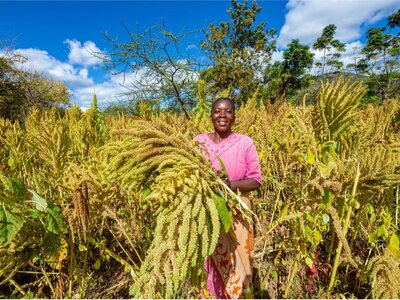South-South and Triangular Cooperation
- 70-plus initiatives
- supported in 69 countries
- 3 Centres of Excellence
- in Brazil, China and Côte d’Ivoire
- US$11 million-plus
- mobilized between 2019 and 2023
Over the past decades, countries of the Global South have emerged as leading voices in global governance, champions of new platforms and institutions, and agents of development action for the realization of the 2030 Agenda for Sustainable Development.
The World Food Programme (WFP) supports countries in harnessing a wealth of agricultural and food systems knowledge, capacities and technical expertise across the Global South, to power collective progress toward a world free from hunger.
Driven by rising demand among countries, WFP has stepped up its engagement to support governments through South-South and Triangular Cooperation (SSTC).
The mechanism involves direct exchange of knowledge, experiences, skills, resources and technical know-how among developing countries, often assisted by a donor or an organization such as WFP. This “triangular” cooperation may take the form of funding, training and technical assistance, as well as other types of support.
WFP-facilitated SSTC supports and empowers Global South countries in sharing, adapting and implementing zero hunger solutions to strengthen their national systems, focusing on the most vulnerable people.







